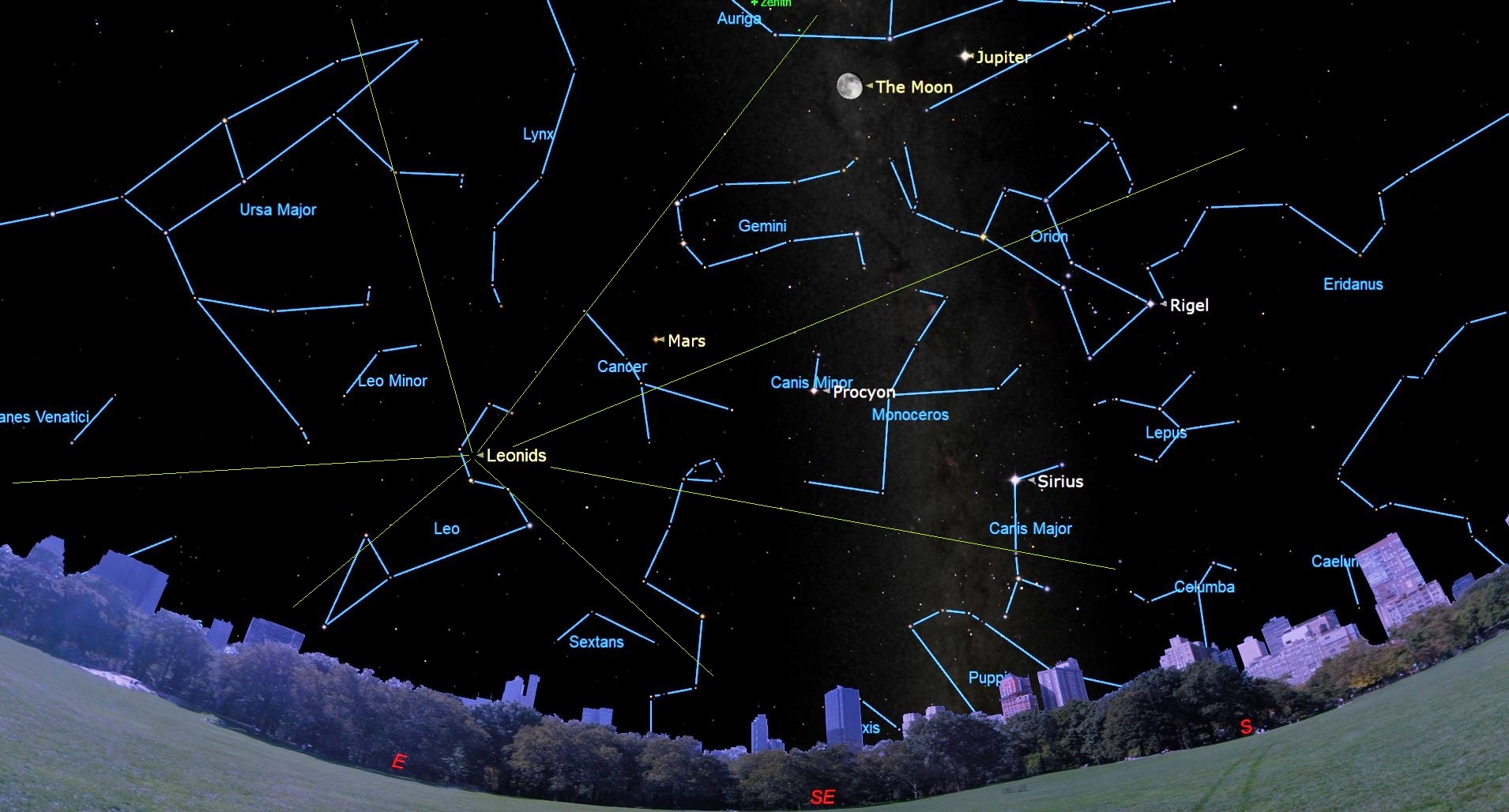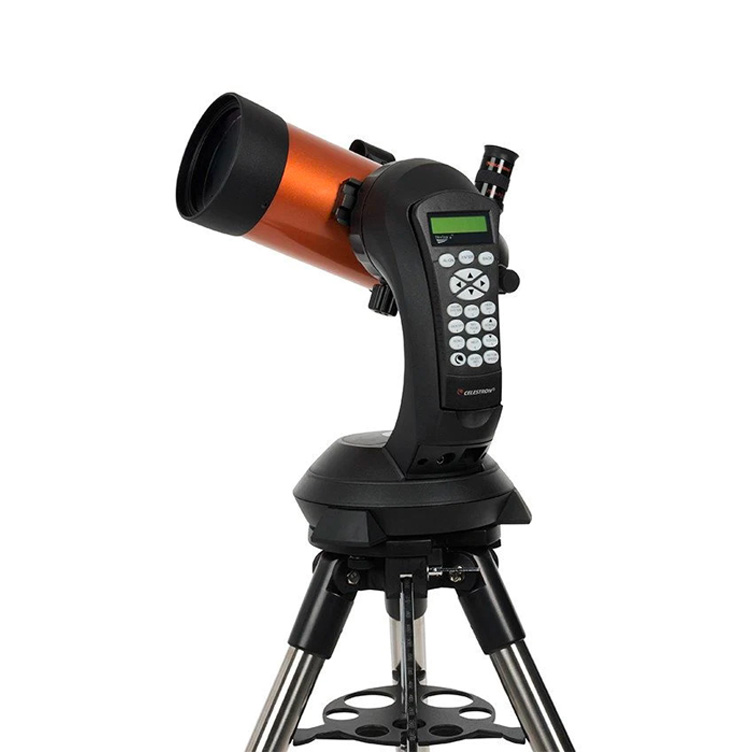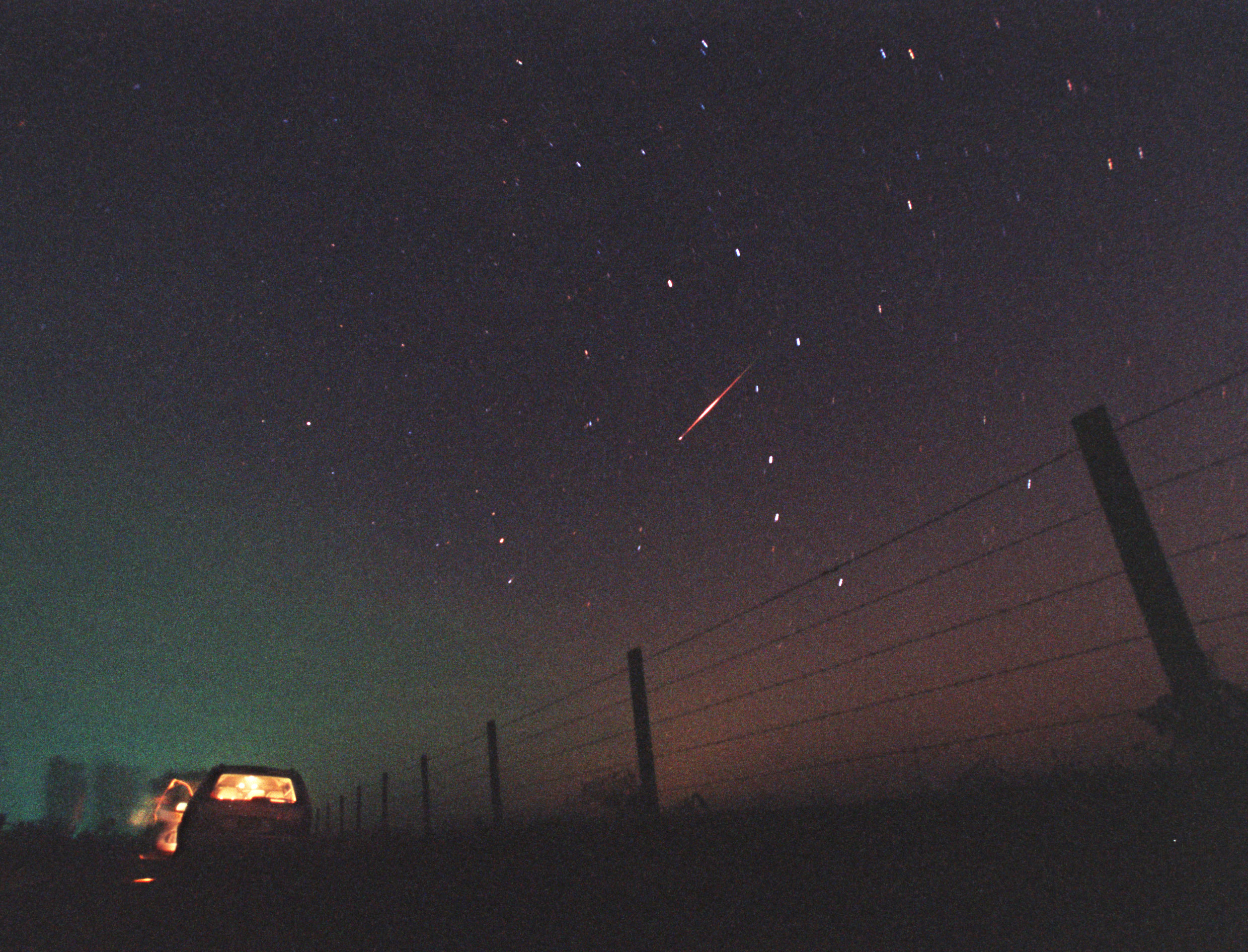
It is important to stress again that at the outset that any suggestion of a spectacular meteor Leonid display this year is, to put it mildly, overly optimistic.
Unless the Leonid meteor shower provides an unexpectedly rich shower at its maximum on Sunday morning (Nov. 17), this year's display will be ruined by the moon, which will turn full on the 15. If the shower is at its normal peak strength of 10 to 20 meteors per hour, little or nothing may be seen in the moonlit sky.
In any event, the hour just before the break of dawn, when the Sickle of Leo is high in the south-southeast sky and the moon is descending in the west, will offer the most promise.
Hardly a "shower," more like a drizzle

Want to see the night sky up close? The Celestron NexStar 4SE is ideal for beginners wanting quality, reliable and quick views of celestial objects. For a more in-depth look at our Celestron NexStar 4SE review.
The term "meteor shower" is a very deceptive misnomer. When the mainstream media announces an impending meteor shower, most people envision a sky filled with shooting stars pouring down through the sky like rain. Such meteor storms have indeed occurred with the famous November Leonids, such as in 1833 and 1966 when meteors fell at stupendous rates in excess of 100,000 per hour. In more recent years, most notably 1999, 2001 and 2002, lesser Leonid displays of up to a few thousand meteors per hour took place.
Those turn-of-the-century Leonid showers — and their accompanying hype — are still remembered by many. Every year at this time, there is always a ripple of excitement in the knowledge that the peak of the Leonid meteor shower is approaching.
So, although the Leonids are one of the most famous of all the annual meteor showers we certainly would not advertise them as a major shower this year, especially to a newcomer to meteor observing, since they likely will be weak and badly affected by the intense moonlight.

Comet crumbs
The Leonids are so named because the shower's radiant point, from where the meteors seem to fan out, is located within the constellation of Leo the Lion. The meteors are caused by the Periodic Tempel-Tuttle comet, which sweeps through the inner solar system every 33.3 years. Each time the comet passes closest to the sun it leaves a "river of rubble" in its wake; a dense trail of dusty debris. A meteor storm becomes possible if the Earth were to score a direct hit on a fresh dust trail ejected by the comet over the past couple of centuries.
But the 2024 Leonids are expected to show only low activity this year with at best 10 to maybe 20 meteors per hour. Russian meteor expert Mikhail Maslov has issued his 2024 forecast for the Leonids, finding nothing unusual expected.
But as we've already noted, the "traditional" peak for the Leonids is scheduled for the predawn hours of Sunday, Nov. 17 and the nearly full moon will be shining brightly like a spotlight in the western sky, not far from Jupiter within the constellation of Taurus the Bull, making observations difficult.
How to observe and what to look for
Watching a meteor shower consists of lying back, looking up at the sky ... and waiting. In addition to this year's handicap of a bright moon lighting up the sky, keep in mind that any local light pollution or obstructions like tall trees or buildings will further reduce your chances of making a meteor sighting.
Leo does not start coming fully into view until the after-midnight hours, so that would be the best time to concentrate on looking for Leonids. Also, because they are moving along in their orbit around the sun in a direction opposite to that of Earth, they slam into our atmosphere nearly head-on, resulting in the fastest meteor velocities possible: 45 miles (72 km) per second. Such speeds tend to produce bright meteors, which leave long-lasting streaks or vapor trains in their wake.
Still, a mighty Leonid fireball can be quite spectacular and bright enough to attract attention even in the bright moonlight. But such outstandingly bright meteors are likely to be very few and very far between this year.
While this year's Leonids might be disappointing, we have the Geminids next month to look forward to, which peaks the night of Dec. 13-14. To help you get ready, check out our guide on how to photograph meteors and meteor showers.
And be sure to check our guide to the night sky for tonight, updated daily with what you need to know for watching the skies.
Joe Rao serves as an instructor and guest lecturer at New York's Hayden Planetarium. He writes about astronomy for Natural History magazine, the Farmers' Almanac and other publications.







